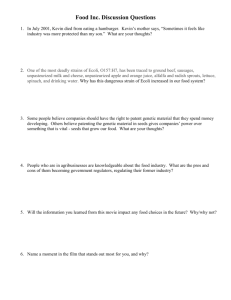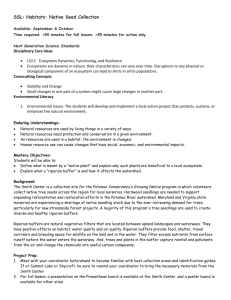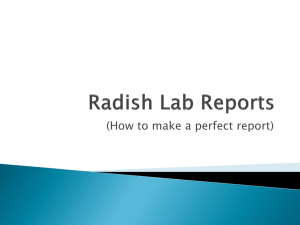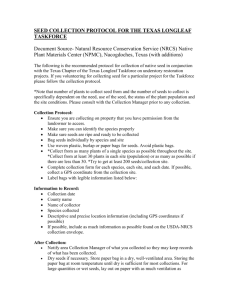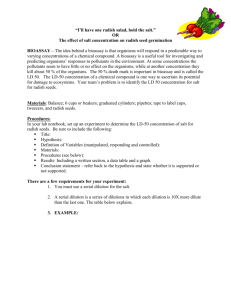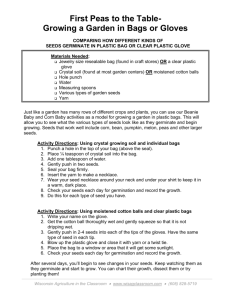Radish Seed Dose Response Activity – Teacher Guide
advertisement
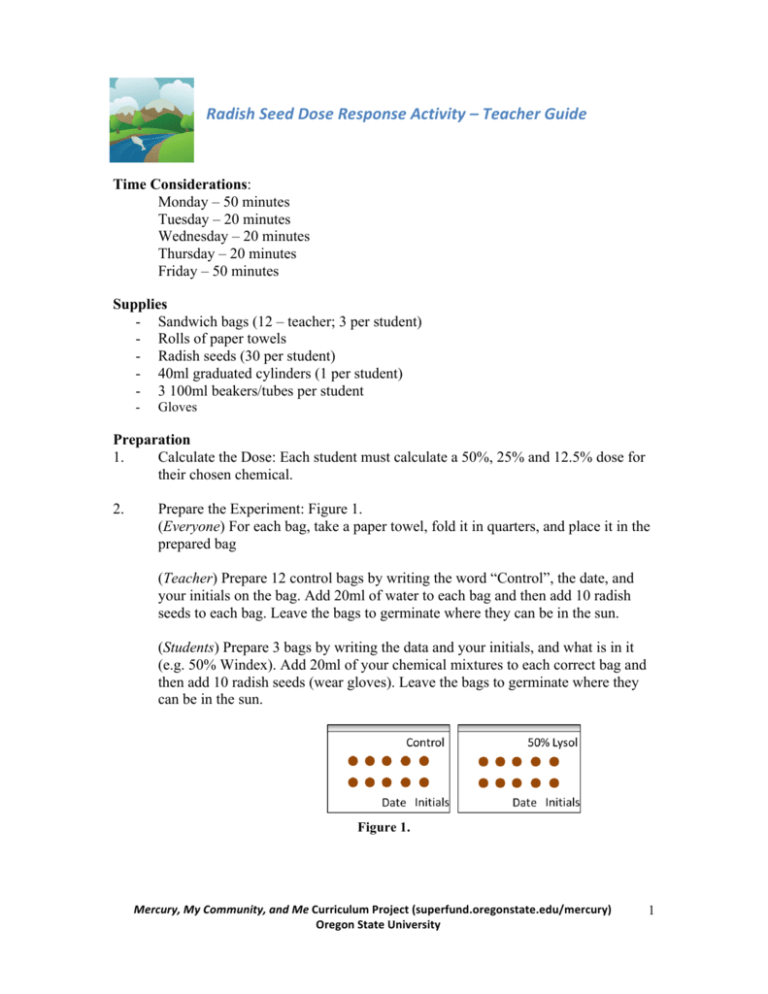
Radish Seed Dose Response Activity – Teacher Guide Time Considerations: Monday – 50 minutes Tuesday – 20 minutes Wednesday – 20 minutes Thursday – 20 minutes Friday – 50 minutes Supplies - Sandwich bags (12 – teacher; 3 per student) - Rolls of paper towels - Radish seeds (30 per student) - 40ml graduated cylinders (1 per student) - 3 100ml beakers/tubes per student - Gloves Preparation 1. Calculate the Dose: Each student must calculate a 50%, 25% and 12.5% dose for their chosen chemical. 2. Prepare the Experiment: Figure 1. (Everyone) For each bag, take a paper towel, fold it in quarters, and place it in the prepared bag (Teacher) Prepare 12 control bags by writing the word “Control”, the date, and your initials on the bag. Add 20ml of water to each bag and then add 10 radish seeds to each bag. Leave the bags to germinate where they can be in the sun. (Students) Prepare 3 bags by writing the data and your initials, and what is in it (e.g. 50% Windex). Add 20ml of your chemical mixtures to each correct bag and then add 10 radish seeds (wear gloves). Leave the bags to germinate where they can be in the sun. Figure 1. Mercury, My Community, and Me Curriculum Project (superfund.oregonstate.edu/mercury) Oregon State University 1 Background: Radish seeds are wonderful models for this activity because of their short germination time (1-3 days). By placing radish seeds in a plastic bag with a paper towel soaked in a chemical solution, and then evaluating germination, participants will both observe and conduct a dose-response study. Choosing the Chemicals: • Have students compile a list of at least 15 different liquid chemical mixtures they would like to test in this model. • From this list, each student will choose one chemical for this experiment. Examples: Window cleaner, ‘Green’ cleaner, Disinfectant, Brewed coffee, soda pop, microwaved water, juice, white board cleaner, liquid soap, hand sanitizer Making the Hypothesis: • Discuss the importance of having a control and how to make a hypothesis. • Have each student create a hypothesis for their chosen chemical and write it in their notebook. Guiding questions: • How will we know the radish seeds are going to grow? • What do we expect would happen under normal (control) conditions? • If a chemical were very toxic, what would we expect to see? • If a chemical were not toxic to radish seeds, what would we expect to see? Set up the Experiment: • • • Each student needs to calculate the following doses for their chemical of choice: 50%, 25%, 12.5%. Explain how the students can use dilution to create all three doses (Figure 2). Once calculated, students prepare bags – see preparation and then observe the radish seeds for a week Figure 2. Mercury, My Community, and Me Curriculum Project (superfund.oregonstate.edu/mercury) Oregon State University 2 Identifying the Response: Each student must identify 3 responses that they will evaluate as the radish seeds germinate. Each day, students must observe their 3 bags, and compare to 3 control bags. In their notebook, students should write down which 3 control bags they are using, to continue comparing to the same 3 control bags. Each day the students should write down data that falls under the three responses they identified. Examples: • Total germination (number of seeds germinated after 5 days) • Delayed germination (germination on a daily basis, represented by percentage per day) • Number of leaves per plant after 5 days • Total size of plant (length after 5 days) • Delayed growth (length of stem measured on a daily basis) • Total viability (plant died, seed never germinated, represented by percentage) • Viability (measured each day, represented by percentage) • Size of root ball (centimeters) • Weight of each radish plant Gathering the data: Five days after the experiment began, students must make their observations as they have done all the other days, but this day they can also remove the seeds to make measurements. Have students wear gloves if necessary for safety. Students must record their data in their notebooks. When the experiment is completed, sandwich bags with the paper towel inside should be sealed, and bags and seeds should be thrown in the trash. The trash should be emptied after the class is over. Mercury, My Community, and Me Curriculum Project (superfund.oregonstate.edu/mercury) Oregon State University 3




